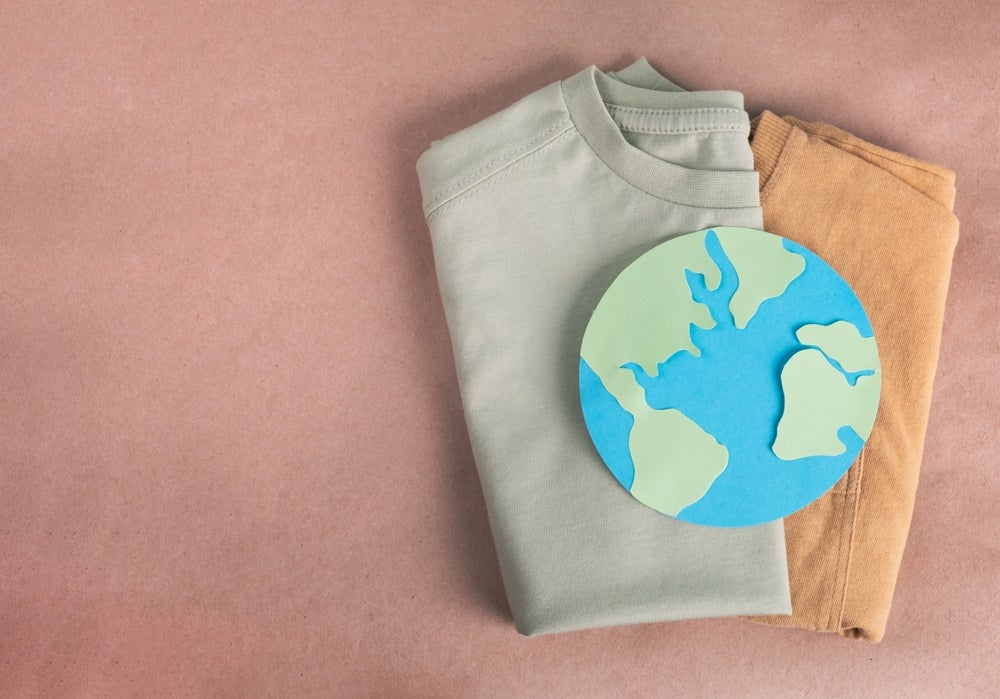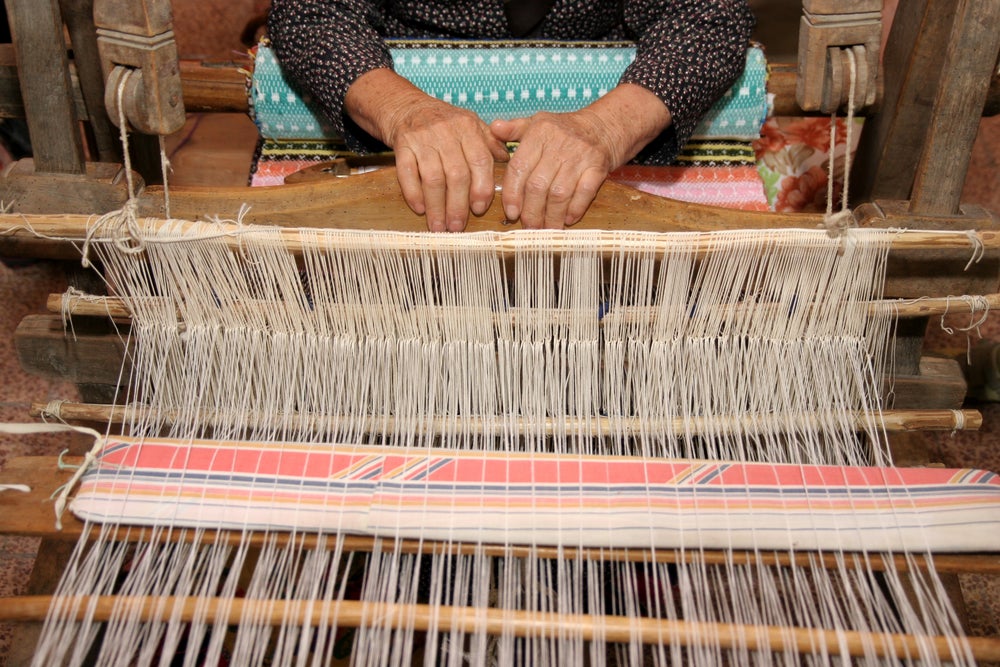
A probe by Britain’s lawmakers into the environmental sustainability of the UK clothing industry has heard how increasingly high volumes of so-called fast fashion items are magnifying the issues. Industry experts suggest solutions may lie in educating designers and consumers in the impacts of their choices, extended producer responsibility, and even new policy recommendations.
Experts on fashion and sustainability were last week questioned by Members of Parliament in the first in a series of evidence hearings by the Environmental Audit Committee as part of its inquiry into the ‘Sustainability of the Fashion Industry.’ Its aim is to examine the environmental and social impacts of ‘fast fashion’ and the wider implications for the clothing industry and its supply chain.
Stella Claxton, a senior lecturer for clothing sustainability research at Nottingham Trent University, told the panel that the rapid growth in the volumes of clothing bought over the last 15-20 years has magnified the issue of sustainability in the garment industry.
“We [also] have a situation where chasing low prices has led to global supply chains looking for cheaper manufacturing,” she explained. “This is normally in developing countries and this makes supply chains very fragmented and complicated, which means quite often the problems are not known about – not necessarily actively hidden, but just very difficult to trace and be transparent.
“Bearing that in mind, and thinking how consumption in Asia is going to rise in the next few years, and how UK brands are looking to service those markets, we have a global situation. Although it is a UK problem, we are part of that global problem. So I don’t think it is sustainable in its current form.”
Dr Mark Sumner, lecturer in sustainability, fashion and retail at the University of Leeds, believes there is an imbalance between the benefits and the costs.
How well do you really know your competitors?
Access the most comprehensive Company Profiles on the market, powered by GlobalData. Save hours of research. Gain competitive edge.

Thank you!
Your download email will arrive shortly
Not ready to buy yet? Download a free sample
We are confident about the unique quality of our Company Profiles. However, we want you to make the most beneficial decision for your business, so we offer a free sample that you can download by submitting the below form
By GlobalDataAccording to data from the University of Leeds, at least 300m workers are employed in the global fashion industry, with the sector enabling many developing nations to use exports to grow GDP.
“Some of the benefits associated with consumers in the UK [are] coming at a cost to workers and the environment in overseas production” – Dr Mark Sumner
“But what we’re seeing is some of the benefits are associated with consumers in the UK – they are getting pleasure and enjoyment from fashion – and that’s coming at a cost to workers and the environment in ex-territorial overseas production routes, as well as agriculture, which is a really big part of the textile industry,” he explained.
“The challenge is working out how we get that even distribution across all the actors within the value chain.”
Reuse and recycling
A number of initiatives have been implemented in the UK to help reduce the environmental impact of clothing, such as the Sustainable Clothing Action Plan (SCAP) launched by UK-based Waste and Resources Action Programme (WRAP). It currently has around 80 signatories and supporters representing more than 58.5% of UK retail sales by volume and includes a number of collectors, recyclers and charities.
Alan Wheeler, direct of the Textiles Recycling Association, told the panel the signatories, which include Marks & Spencer, ASOS and Arcadia, are making significant progress towards their environmental, water and waste targets.
Yet with clothing consumption having increased five-fold since the 1980s, reuse and recycling is still a very problematic area. “In Britain we have a pretty good collection rate per head of population. We’re one of the best in the world. But we’re also one of the most wasteful,” Wheeler asserted.
At present, reusable clothing is being sent to markets in Africa, Eastern Europe or to Asia. But with China now the fourth largest exporter of reusable clothing in the world – growing from 0.88% of all global exports of used clothing in 2010, according to the Textiles Recycling Association, to 6% of the market today.
“There is only one thing that’s going to happen to the Chinese market, and that is that it’s going to become the dominant factor. We have to start seriously planning what to do with [the clothing] that’s coming onto the market.
“The other issue is with recycling. It has no value whatsoever. If we’re going to collect more, we’re going to have to recycle more. And we need new markets,” he told the panel.
Microfibre ocean waste
As well as the issue of waste, clothing production contributes to climate change, and when garments are washed they release microplastic fibres that make their way into the ocean.
“I would like to see more retailers and brands…offering incentives for design for recycling, design for disassembly, design for durability” – Alan Wheeler
Wheeler says this is a key industry issue that needs to be prioritised and considered at the product design stage. “It’s not about not using clothing, it’s not about eliminating fibres, but if we’ve got identical looking garments and some are shedding fibres four or five times faster than others, to me it suggests it hasn’t really been in the design brief to consider that.
“I would like to see more retailers and brands take more responsibility for the clothing they’re putting on the market and offering incentives for design for recycling, design for disassembly, design for durability and perhaps looking at incentives to stimulate markets for recycled fibres.”
Professor Richard Thompson of the University of Plymouth concurred. He believes not enough research is being undertaken in terms of textile design to tackle the problem.
“There is interest in filters that may be able to capture some of these fibres in the domestic setting. To my view that is an end of line solution. We’re currently doing work for the Natural Research Environment Council looking at wastewater treatment and its effectiveness. But when you realise the large quantity of sanitary items that escape wastewater treatment, however effective those plants are they’re not going to be able to capture all of the microscopic fibres.”
In the first instance, Thompson suggested there needs to be more investment in ensuring industry solutions match the appropriate part of the problem – and avoid simply going for the low-hanging fruit.
He adds: “What’s needed from the academic community is impartial, reliable evidence to look at solutions, to say what the environmental consequences are, what some of the material design solutions are, what are the behavioural and science social aspects of that – will these products be acceptable – and failing all of those things, are there legal and policy measures you might bring in to help to nudge those directions?
“It’s about independent, impartial evidence that can guide industry and policy appropriately so we don’t take knee-jerk reactions.”
Increasing the use of natural fibres
Another solution to reducing the impact of microfibre release is to increase the use of natural fibres. A study published earlier this year by the Norwegian institute for consumer research (SIFO) estimated that between 20% and 35% of all microplastics in marine environments come from synthetic clothing. It advised that increasing the amount of natural fibres in garments would make a “significant contribution” to solving the problem.
Leeds University’s Sumner, however, highlighted that natural fibres can have the biggest environmental impact because of the way they are grown. “There are significant challenges around the use of highly toxic pesticides, the over-use of fertilisers, issues around health and safety for workers, water consumption and carbon footprint. We are stretching the planet’s ability to recover from that agricultural system. A direct switch across to natural fibres has all sorts of unintended consequences.”
“We have to understand the evidence behind the problem and the direction of travel before we can best know how to move in that direction” – Professor Richard Thompson
He also emphasised that policy has an important role to play. “We’ve seen some of the successes with the Modern Slavery Act; there are some limitations with it, but there are opportunities where policy can have a really important role for UK Plc, but also that moral point of view in terms of what we’re doing to other nations in terms of our consumption.”
Plymouth University’s Thompson offers a similar view. Rather than a switch to natural fibres, he believes it is about responsible use, and considered “from source to grave and life in service.”
However, regulation may not be the answer. “It has to start with the appropriate evidence. Consumers are quite hungry at the moment to make informed choices. Some of this is about communicating to the consumer why a garment is problematic, why the design has changed slightly. It could be regulation but it could also be a more subtle nudge. We have to understand the evidence behind the problem and the direction of travel before we can best know how to move in that direction.”
Can fast fashion ever be sustainable?
While fast fashion has been singled out for criticism due to its model of producing cheap clothes at often huge human, social and environmental cost, the Clothing Sustainability Research Group’s Claxton believes its impact is not too dissimilar to that of general clothing.
“The impact really is just related to the volumes being sold, the speed at which it is being done and the opaqueness of the supply chain, whereby sometimes the issues can be hidden and the drive for low prices can hide problems in the supply chain. If you beat suppliers up for price you will get them cutting corners on environmental impacts and also on the social side.”
She also believes education needs to play a role in offering a more multi-disciplinary approach. “We have designers who are very creative but we’ve lost the textile technology aspect of our education that was very present 20 or 30 years ago and served our own manufacturing industry. We’ve lost a lot of that knowledge on materials and processes. If we had that, that would be a huge help. And then maybe how design departments and products are developed within retailers and how those teams are set up could be looked at.”
Thompson concurs. “It’s about bringing together academics across the disciplines – social science, economic science, environmental science – to help us understand exactly what we’re missing and to provide evidence that can really inform change that can make sure we’re not moving towards unintended consequences.”






